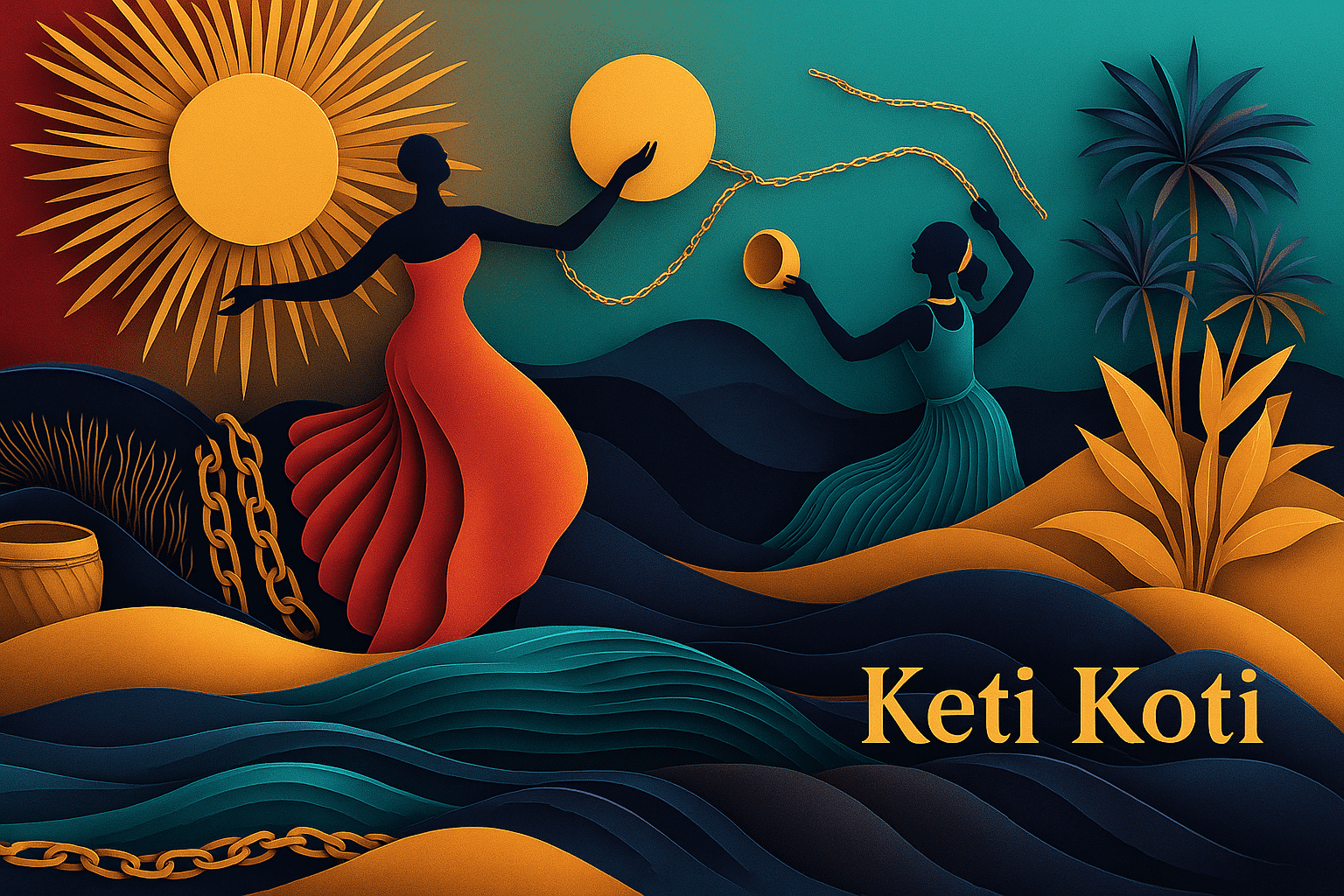What is Keti Koti?
Keti Koti is held every year on July 1 in Suriname and the Netherlands. The name comes from Sranantongo, a Creole language spoken in Suriname, and means “broken chains.” It marks the official abolition of slavery in Suriname and the former Dutch Caribbean colonies on July 1, 1863. The day is a combination of remembrance, mourning, and celebration of freedom.
It is especially important for descendants of enslaved people and for those who work to preserve the memory of colonial slavery. Keti Koti is also a call to confront ongoing racism and inequality in society today. The day includes public ceremonies, cultural programs, music, food, and the wearing of traditional clothing.
History and Origin
The Netherlands was active in the transatlantic slave trade for over two centuries. Between the 17th and 19th centuries, thousands of Africans were forcibly taken to work on plantations in Suriname and the Dutch Antilles. Life under slavery was marked by violence, dehumanization, and forced labor. Families were separated. Rebellion was met with brutality.
Abolitionist movements gained strength in the 19th century. In the Netherlands, pressure increased both from within the colonies and from international shifts in policy. In 1863, the Dutch government declared the end of slavery in its colonies. This affected over 45,000 enslaved people in Suriname and over 12,000 in the Dutch Antilles.
However, this “freedom” came with restrictions. In Suriname, freed people were forced to continue working for their former enslavers for a further ten years under contract, often in near-identical conditions. It wasn’t until 1873 that true legal freedom was granted.
Keti Koti began as a small annual commemoration in Suriname. The first official celebration took place in 1955. In 1975, Suriname gained independence from the Netherlands, but Keti Koti remained an important national holiday. In the Netherlands, public awareness grew more slowly. The establishment of the National Slavery Monument in Amsterdam in 2002 helped bring broader recognition. In 2009, the Keti Koti Festival was launched in Amsterdam’s Oosterpark.
Who participates in Keti Koti?
- Surinamese communities: Mark the day with traditional ceremonies, meals, and music.
- Descendants of enslaved people: Reflect on their ancestry and raise awareness of historical injustice.
- Dutch citizens and institutions: Participate in public events and engage in dialogue.
- Activist groups: Use the day to call for equality, reparations, and anti-racism.
- Cultural organizations: Organize lectures, exhibits, and performances about colonial history.
Slogans and Themes
Common themes include remembrance, liberation, and justice. Phrases like “Breaking the Chains,” “No future without past,” and “Freedom through memory” are often used. Keti Koti combines mourning and joy, resistance and celebration.
The day also opens conversations about contemporary forms of inequality that trace back to slavery. Education and remembrance are key parts of the message.
Colors, Symbols, and Patterns
Colors
- Red: Stands for the blood and suffering of enslaved people.
- Green: Represents life, fertility, and hope.
- Yellow: Symbolizes strength and resilience.
Symbols
- Broken chains: Represent liberation from slavery.
- The Kwakoe statue: A symbol of freedom and dignity in Suriname.
- Portraits and ancestral images: Used in ceremonies to honor the enslaved.
Patterns
- Angisa headwraps: Folded in symbolic ways, each with a hidden message.
- Koto dress fabrics: Worn as a form of cultural pride and identity.
- Decorative flags: Often used to show Surinamese heritage and unity.
Most Used Hashtags
- #KetiKoti
- #July1
- #EmancipationDay
- #BrokenChains
- #RememberSlavery
How do you celebrate Keti Koti?
- Join a memorial: Attend the annual ceremony at monuments like the one in Oosterpark.
- Wear traditional dress: Show respect through koto and angisa clothing.
- Eat together: Share meals like heri heri, often served at community gatherings.
- Visit an exhibit: Learn about slavery, resistance, and cultural heritage.
- Take part in dialogue: Join talks, workshops, or performances centered on justice and memory.
Why is Keti Koti important?
Keti Koti is important because it forces society to confront a painful past. It honors the lives of those who were enslaved and brings their stories into the present. It is a reminder that colonial history has long-lasting effects on identity, opportunity, and power.
The day also helps build understanding across generations and cultures. It gives space for healing and encourages reflection, action, and solidarity. Keti Koti is not just about remembering the end of slavery. It is about continuing the work of freedom.
Features
July 1: Keti Koti (Suriname / Netherlands)
Why do you keep falling for the same type?
Read the article Lovemaps: the hidden blueprint of our love.

